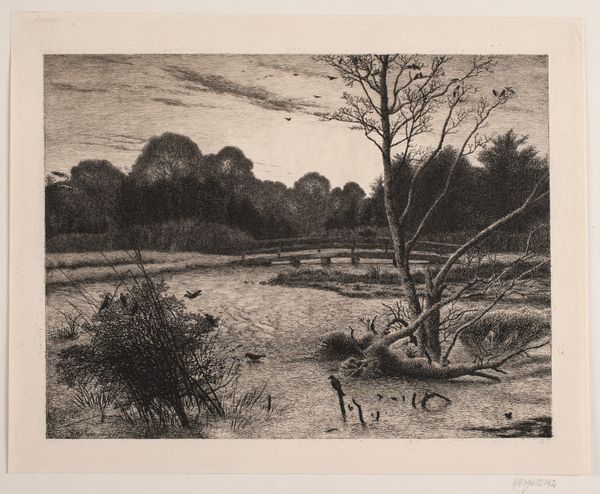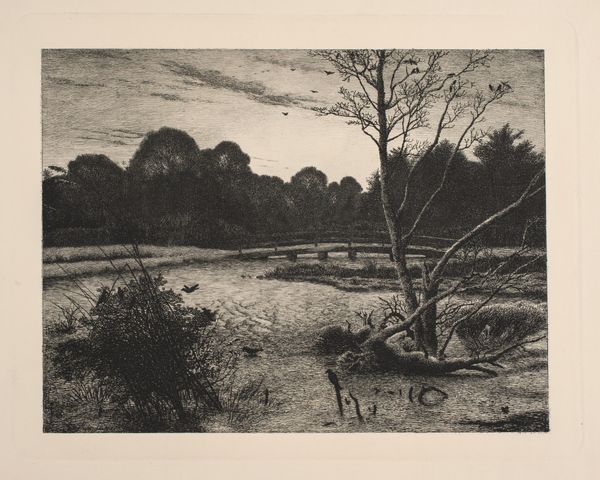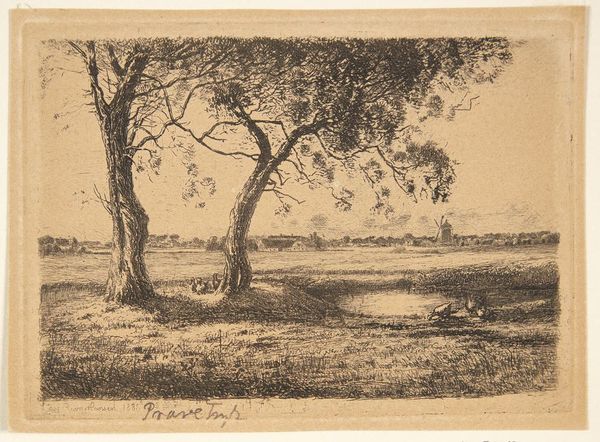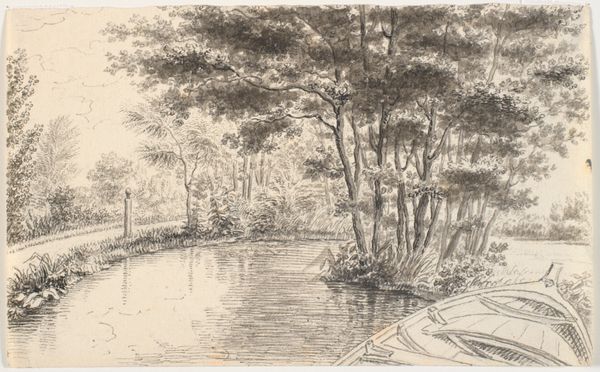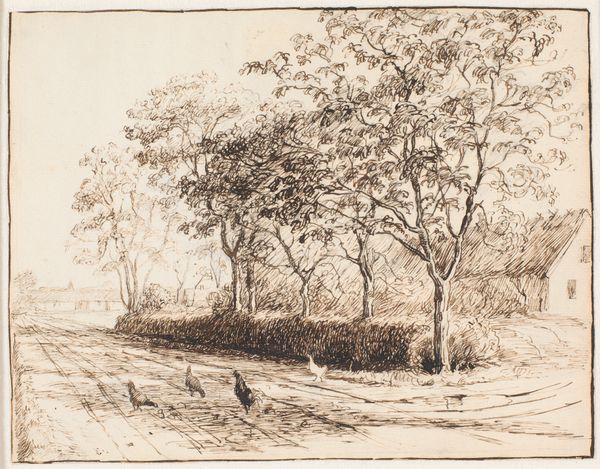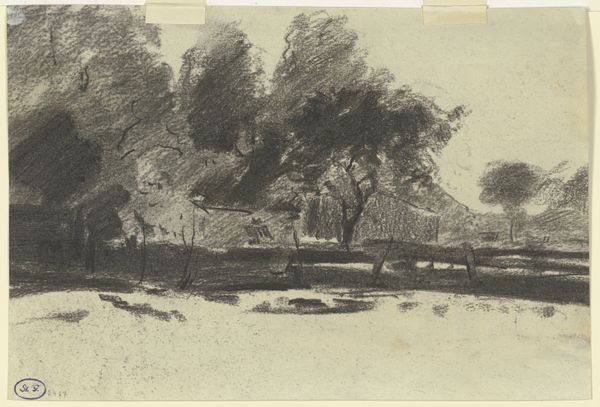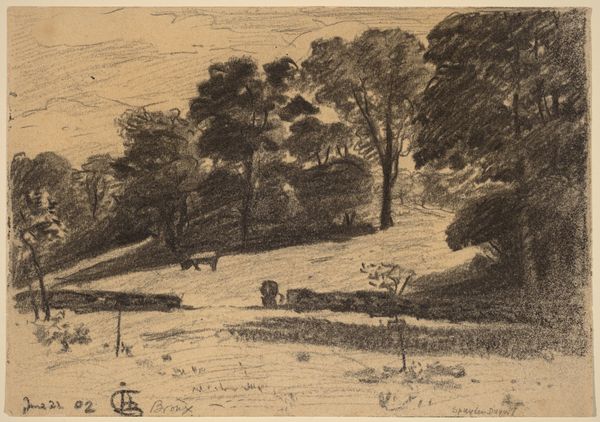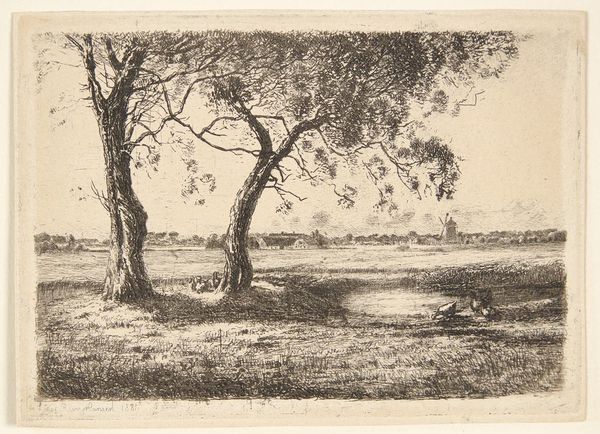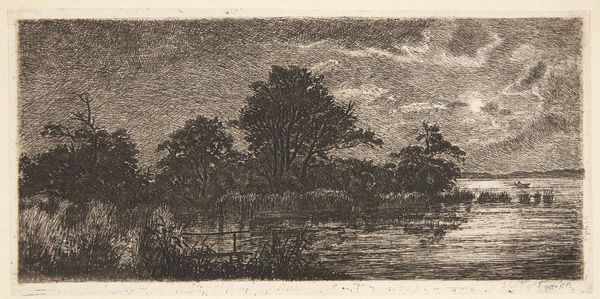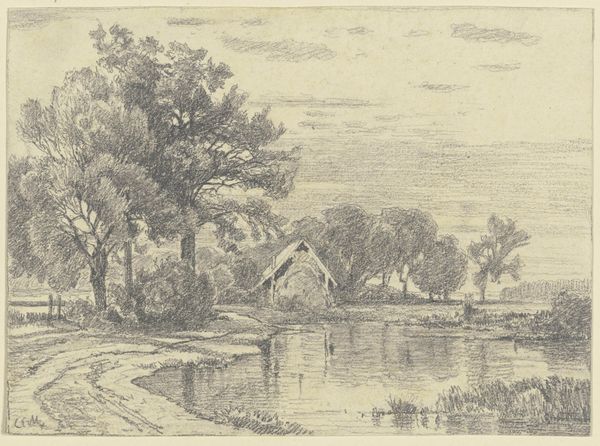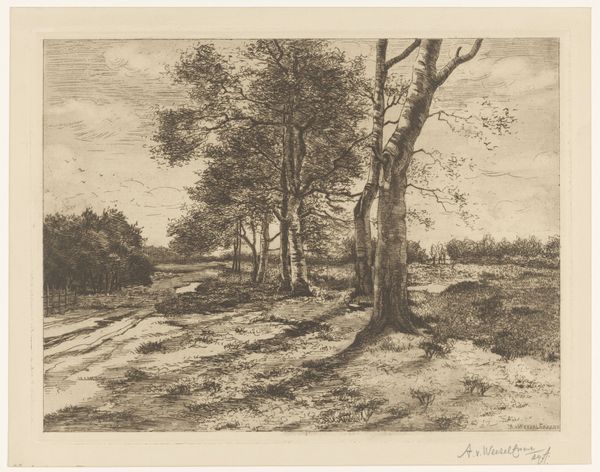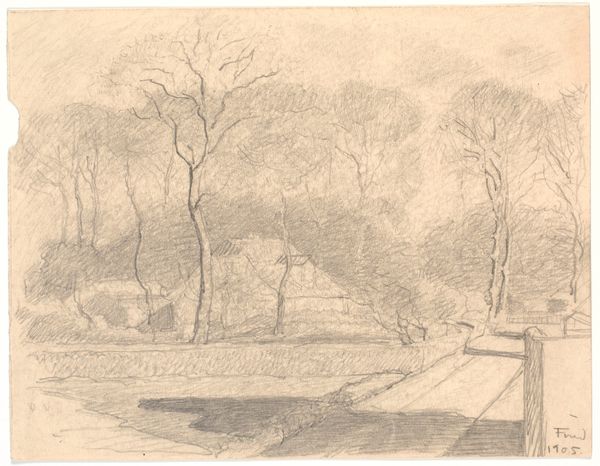
drawing, tempera, print, etching
#
drawing
#
tempera
# print
#
etching
#
landscape
#
line
#
realism
Dimensions: sheet: 3 7/8 x 6 in. (9.8 x 15.2 cm)
Copyright: Public Domain
Curator: Oh, this landscape immediately strikes me as so quiet and still. Editor: It is a peaceful scene, isn’t it? What we’re looking at here is “Autumn’s Grey and Melancholy,” an etching made by Henry Farrer in 1884. It’s currently held at the Metropolitan Museum of Art. Curator: Etching... It's fascinating how these tiny lines build such a powerful feeling of a wide, open space. The lack of color contributes to that muted feeling suggested in the title, too, emphasizing a subdued mood. Editor: Indeed. And you see, by using etching—a printmaking process involving acid to bite lines into a metal plate—Farrer could create a highly detailed and repeatable image. What might have drawn him to printmaking, do you think? Curator: The landscape here feels archetypal, recalling imagery from both Hudson River School paintings, which often express the sublimity of nature and its resonance in American identity, yet rendered here on a much more domestic scale. What do you notice? Editor: I'm drawn to the materials, actually. Farrer layers drawing, tempera, and printmaking techniques. Why mix those mediums instead of committing to painting in oils? Perhaps because printed images allow the art to spread beyond a select, elite patronage. Printmaking democratizes art, so perhaps his somber views can circulate among those more in tune with a quieter aesthetic. Curator: Perhaps you’re right, and the etching technique further allows him to reproduce and disseminate that very distinct emotional impact to a wider audience, solidifying shared memories associated with this tranquil image. I also see such precision in each tiny line. They work together to amplify the quietness of the moment. Editor: That’s well put. I agree with your sense of an internalized feeling. What begins in close, detailed manual labor—etching the lines and mixing pigments—manifests for the viewer as a scene ripe for calm contemplation and broader dissemination. I do find myself pondering about the socioeconomics and how this print made its way to its audience. Curator: It makes you realize how powerful these quieter symbols and scenes can be, and it brings an interesting dimension to my understanding of the landscape. Editor: Yes, a more profound understanding is formed through both of our different viewpoints.
Comments
No comments
Be the first to comment and join the conversation on the ultimate creative platform.
